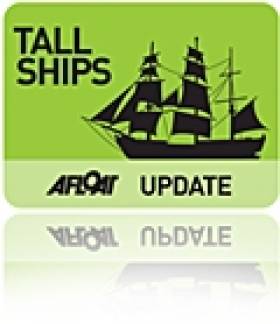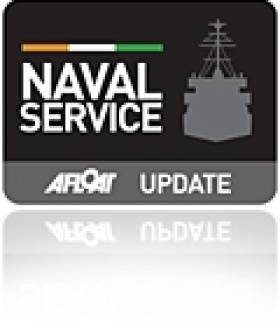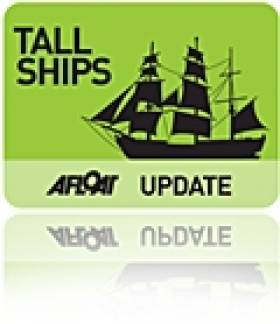Displaying items by tag: Creidne
‘Irish’ Tallships Are Thin and Small On the Sea-Ground
#IRISH TALLSHIPS – Of the 40-plus tallships participating in the Dublin Tallships Race Festival, only two vessels are Irish, and as previously reported on Afloat.ie, there have been calls to have a new cross-border national sail training flagship reinstated, writes Jehan Ashmore.
What represents Ireland, are not large A-class tallships but smaller vessels in the form of the Naval Reserve training Bermuda ketch STV Creidne (C-class) and the Kinsale based schooner Spirit of Oysterhaven (D-class), which sailed through Dalkey Sound yesterday morning.
It is a stark contrast to the glory days of when the Irish tallships, met together for a historic first and only gathering at the inaugural Waterford Tall Ships Race Festival back in 2006. The tallship trio were brigantine Asgard II (which sank in 2008) and the barques Dunbrody and Jeanie Johnston.
The unique gathering took place during the 'Parade of Sail' in Waterford Estuary, where Asgard II was given the honour in leading the fleet, followed by her fellow Irish fleetmates and the rest of the international flotilla.
Both the replica 19th century Dunbrody and Jeanie Johnston remain in a static role in New Ross, Co. Wexford and in Dublin Docklands, where they serve as floating museums, telling the story of emigration and the famine ships.
During the Dublin Tallships Festival, the Jeanie Johnston will be open to the public free of charge throughout the weekend from 10am to 5pm (last entry) and is on a first come first basis.
Entry to the barque is courtesy of Dublin Docklands Development Authority which purchased the vessel in 2005. For further information visit: www.jeaniejohnston.ie/index.html
Creidne Sail Training Scheme
The Naval Service's Sailing Training Vessel Creidne cuts a great pose sailing in Cork Harbour on page three of the Autumn issue of Afloat. The refurbished 47-footer is now in full use by the Naval Service as a training vessel for naval personnel and is consequently a common sight sailing off the Haulbowline base.
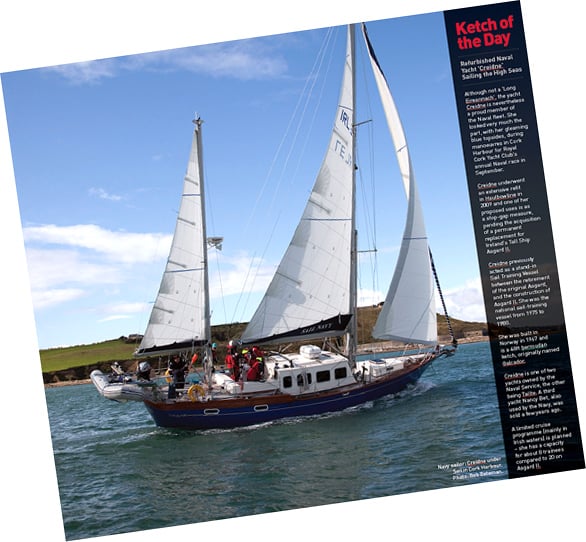
No Sail Training Programme because of Government cut backs
Although Creidne, built in 1967, undertook a limited sail training cruise programme in 2009, the programme was shelved when Creidne became a casualty of the Government's decision to discontinue the Sail Training Scheme operated by Coiste an Asgard. The Defence Forces have asked us to point out that the sail training programme, that took up to eight trainees, has been stopped even if the Autumn Afloat article may have given the impression that the Creidne is still carrying out this function. Apologies for any confusion.
Refurbished Naval Yacht 'Creidne' Sailing the High Seas
Although not a 'Long Eireannach', the yacht Creidne is nevertheless a proud member of the Naval fleet. She looked very much the part, with her gleaming blue topsides, during manouvers in Cork Harbour for Royal Cork Yacht Club's annual Naval race last Sunday. PHOTOS BELOW BY BOB BATEMAN.
Creidne underwent an extensive refit in Haulbowline in 2009 and one of her proposed uses is as a stopgap measure, pending the acquisition of a permanent replacement for Ireland's Tall Ship Asgard II.
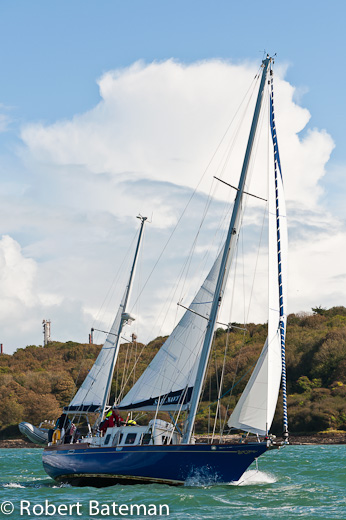
Creidne under Sail. Photo: Bob Bateman. More photos below
Creidne previously acted as a stand in Sail Training Vessel between the retirement of the original Asgard, and the construction of Asgard II. She was the national sail-training vessel from 1975 to 1980.
She was built in Norway in 1967 and is a 48 ft bermudan ketch, originally named Galcador.
Creidne is one of two yachts owned by the Naval Service, the other being Tailte. (Also pictured below). A third yacht Nancy Bet, also used by the Navy, was sold a few years ago.
A limited cruise programme (mainly in Irish waters) is planned, she has a capacity for about 8 trainees compared to 20 on Asgard II.


























